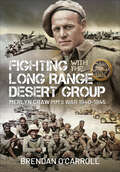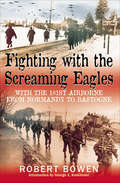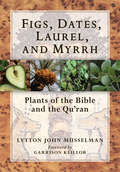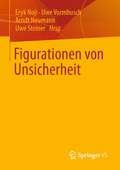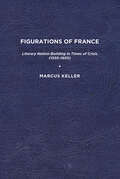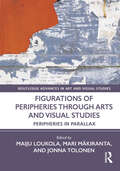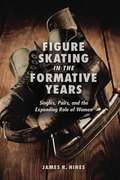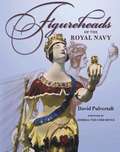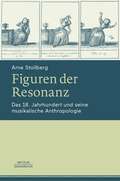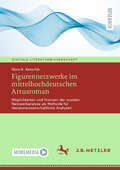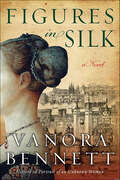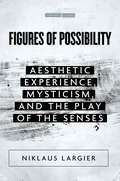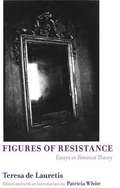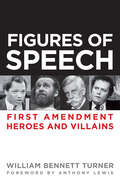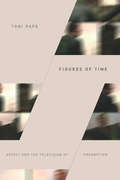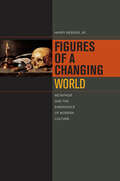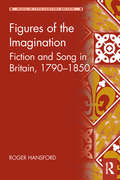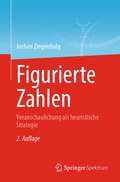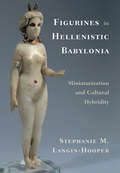- Table View
- List View
Fighting with the Fourteenth Army in Burma: Original War Summaries of the Battle Against Japan 1943–1945
by James LutoThe Fourteenth Army was one of the most successful British and Commonwealth forces of the Second World War. It was not only the largest of the Commonwealth armies but was also the largest single army in the world with around half a million men under its command. Operating in the most inhospitable terrain, it drove the previously undefeated Japanese Army from the Indian border and out of Burma in an unrelenting offensive.The Fourteenth Army, often referred to as the Forgotten Army, was made up from units that came from all corners of the Commonwealth and was composed of thirteen divisions from East and West Africa as well as Britain and India. After the defeat of the Japanese these divisions compiled a summary of its actions and it is these unique documents that form the basis of this new book.Presented here together then for the first time is the story of war against the Japanese as told by each of the divisions that fought in that bitter conflict the original and authentic accounts untouched by the pens of historians.These accounts can never be supplanted and will be an invaluable source of information for generations to come. It will also help the many millions of relatives of those men that fought with the Fourteenth Army understand the complex campaign of 1943-1945.The Fighting Divisions of the Fourteenth Army is completed with citations for those actions which saw the award of the Victoria Cross and detailed Orders of Battle throughout the Fourteenth Army's existence to make this the most detailed study of its kind.
Fighting with the Long Range Desert Group: Merlyn Craw MM's War 1940–1945
by Brendan O'CarrollFormed in 1940 the Long Range Desert Group was the first Allied Special Forces unit established to operate behind German and Italian lines in North Africa. Its officers and men were volunteers recruited from British and Commonwealth units. Merlyn Craw was serving with the 2nd New Zealand Expeditionary Force when he joined the LRDG in 1941. He took part in numerous missions in the desert. The navigational driving and fighting skills of the LRDG were legendary and they were frequently responsible for transporting Stirling’s SAS detachments on raids. Merlyn’s luck ran out when he was captured on the Barce raid in September 1942, but he escaped twice, the second time making it back to Allied lines. Sent home on leave, he returned to Italy with the New Zealand Army. After a ‘disagreement’ he went AWOL and rejoined the LRDG with no questions asked, serving until the end of the war. Drawing on interviews with Merlyn and other former LRDG veterans, the author has created a vivid picture of this exceptional and highly decorated fighting man. Readers cannot fail to be impressed by the courage and ruthless determination of Merlyn Craw MM and his comrades.
Fighting with the Screaming Eagles: With the 101st Airborne from Normandy to Bastogne
by Robert BowenA member of the 101st Airborne&’s Glider Infantry recalls WWII, from the horror of D-Day to the despair of Nazi captivity, in this compelling memoir. As World War II broke out, Robert Bowen was drafted into Company C, 401st Glider Infantry, 101st Airborne Division. Soon afterwards, he found himself storming Utah Beach amid the chaos of D-Day, through unfamiliar terrain littered with minefields and hidden snipers. Bowen was wounded during the Normandy campaign but went on to fight in Holland and the Ardennes, where he was captured. That&’s when his &“trip through hell&” truly began. In each of Bowen&’s campaigns, the 101st &“Screaming Eagles&” spearheaded the Allied effort against the Nazi occupation of Europe. At Bastogne, they stood nearly alone against the onslaught of enemy panzers and grenadiers. His insights into life behind enemy lines after his capture provide as much fascination as his exploits on the battlefield. Written shortly after the war, Bowen&’s narrative is immediate and compelling. An introduction by the world&’s foremost historian of the 101st Airborne, George Koskimaki, further enhances this classic work.
Figs in Frost
by Denise RobinsLucia marries young, yielding more to her parents urgings than the dictates ofher heart. As the years go by, she grows to despise her brutish, egotisticalhusband - finding contentment only in raising her two young daughters. Thensuddenly, Lucia falls gloriously in love, discovering the tenderness and blissshe has never even dared to dream of. And so her husband fights back with theonly weapon he has - forcing Lucia to choose between the children she cherishedand the man she loves...
Figs in Frost
by Denise RobinsLucia marries young, yielding more to her parents urgings than the dictates ofher heart. As the years go by, she grows to despise her brutish, egotisticalhusband - finding contentment only in raising her two young daughters. Thensuddenly, Lucia falls gloriously in love, discovering the tenderness and blissshe has never even dared to dream of. And so her husband fights back with theonly weapon he has - forcing Lucia to choose between the children she cherishedand the man she loves...
Figs, Dates, Laurel, and Myrrh: Plants of the Bible and the Quran
by Garrison Keillor Lytton John MusselmanThis book celebrates the plants of the Old Testament and New Testament, including the Apocrypha, and of the Quran. From acacia, the wood of the tabernacle, to wormwood, whose bitter leaves cured intestinal worms, 81 fascinating chapters—covering every plant that has a true botanical counterpart—tell the stories of the fruits and grains, grasses and trees, flowers and fragrances of ancient lore. The descriptions include the plants' botanical characteristics, habitat, uses, and literary context. With evocative quotations and revelatory interpretations, this information is all the more critical today as the traditional agrarian societies that knew the plants intimately become urbanized.The unusually broad geographic range of this volume extends beyond Israel to encompass the Holy Land's biblical neighbors from southern Turkey to central Sudan and from Cyprus to the Iraq border.Richly illustrated with extensive color photography and with a foreword by the incomparable Garrison Keillor, this delightful ecumenical botany offers the welcome tonic of a deep look into an enduring, shared natural heritage.
Figurationen von Unsicherheit
by Uwe Vormbusch Uwe Steiner Eryk Noji Arndt NeumannJede Zeit, jede Gesellschaft kennt ihre eigenen Figurationen von Unsicherheit. Der Band fragt nach den historisch variablen Strategien, Mechanismen und Kulturtechniken, mittels derer Gesellschaften Unsicherheiten thematisieren und bearbeiten. Solche Praktiken sind keineswegs durchgängig auf Unsicherheitsvermeidung bzw. -absorption ausgerichtet. Vielmehr existieren Strategien der Erzeugung und der Absorption von Unsicherheit parallel und verweisen aufeinander. Dieser Diagnose versuchen die interdisziplinären Perspektiven, die dieser Band versammelt, Rechenschaft zu tragen. Geschichtswissenschaften, Literatur- und Medienwissenschaften, Philosophie, Psychologie, Soziologie – sie alle haben eigene Zugänge zum Phänomen der Unsicherheit. Dies zeigt sich auch in der Bandbreite der hier verhandelten Themen: das Entscheiden und Nicht-Entscheiden, Algorithmen und Prognosen, Prävention und Fiktion, Erfahrungsgeschichte, Emotionen und politische Repräsentation, Self-Tracking, Bewertung und Lernen.
Figurations of France: Literary Nation-Building in Times of Crisis (1550-1650)
by Marcus KellerIn Figurations of France: Literary Nation-Building in Times of Crisis (1550-1650), Marcus Keller explores the often indirect and subtle ways in which key texts of early modern French literature, from Joachim Du Bellay’s Défense et illustration de la langue française to Corneille’s Le Cid, contribute to the fiction of France as a nation. Through his fresh take on these and other classics, he shows that they not only create the French as an imaginary community but also provide venues for an incisive critique of the political and cultural construct that underpins the modern nation-state. Current theories of nationhood, in particular the concepts of the nation form and fictive ethnicity (Étienne Balibar), inform the close readings of Du Bellay’s Défense, Ronsard’s Discours, d’Aubigné’s Tragiques, Montaigne’s Essays, Malherbe’s odes, and Corneille’s Le Cid and Horace. They reveal the imaginary power and unifying force of early modern figurations of France that come to bear in this heteregoneous corpus of French literature, with texts ranging from manifesto and epic poem to essay and tragedy. Situating each author and text in their particular historical context, the study suggests that the literary invention of France in the sixteenth and seventeenth centuries is as abundant as it is conceptually innovative: Du Bellay, for example, develops an idea of France by portraying the French language as a pruned and grafted tree while d’Aubigné proposes to think of the French as a nuclear but fatherless family. Blood functions as a highly charged metaphor of nationhood in all texts. Opening up new perspectives on these canonical works, the focus on literary nation-building also puts them into unexpected and thought-provoking relationships to each other. Figurations of France deliberately crosses the fictive boundary between the sixteenth and the seventeenth centuries and argues that, in terms of imaginary nation-building, the contours that delineate the early modern period and separate it from what we call the modern era quickly begin to dissolve. Ultimately, the book makes the case for early modern literature as a creative and critical discourse, able to nourish and nuance our thinking about the nation as the postmodern nation-state is increasingly called into question by the economical, political, and cultural effects of globalization. Published by University of Delaware Press. Distributed worldwide by Rutgers University Press.
Figurations of Peripheries Through Arts and Visual Studies: Peripheries in Parallax (Routledge Advances in Art and Visual Studies)
by Maiju Loukola Mari Mäkiranta Jonna TolonenThis edited volume breaks new ground for understanding peripheries and peripherality by providing a multidisciplinary cross-exposure through a collection of chapters and visual essays by researchers and artists. The book is a collection of approaches from several disciplines where the spatial, conceptual, and theoretical hierarchies and biased assumptions of ‘peripheries’ are challenged. Chapters provide a diverse collection of viewpoints, analyses, and provocations on ‘peripherality’ through bringing together international specialists to discuss the socio-political, aesthetic, artistic, ethical, and legal implications of ‘peripheral approach.’ The aim is to illuminate the existing, hidden, often incommensurable, and controversial margins in the society at large from equal, ethical, and empathic perspectives. The book is designed to assist established researchers, academics, and students across disciplines who wish to incorporate novel, arts and practice-based research and critical approaches in their research projects, artwork, and academic writing. Providing both a consolidated understanding of the peripheries, visual studies, and artistic research as they are and setting expansive and new research insights and practices, this book is essential reading for scholars of arts and humanities, visual culture, art history, design, philosophy, and cultural studies.
Figure Skating in the Formative Years: Singles, Pairs, and the Expanding Role of Women
by James R HinesOnce a winter pastime for socializing and courtship, skating evolved into the wildly popular competitive sport of figure skating, one of the few athletic arenas where female athletes hold a public profile--and earning power--equal to that of men. Renowned sports historian James R. Hines chronicles figure skating's rise from its earliest days through its head-turning debut at the 1908 Olympics and its breakthrough as entertainment in the 1930s. Hines credits figure skating's explosive expansion to an ever-increasing number of women who had become proficient skaters and wanted to compete, not just in singles but with partners as well. Matters reached a turning point when British skater Madge Syers entered the otherwise-male 1902 World Championship held in London and finished second. Called skating's first feminist, Syers led a wave of women who made significant contributions to figure skating and helped turn it into today's star-making showcase at every Winter Olympics. Packed with stories and hard-to-find details, Figure Skating in the Formative Years tells the early history of a sport loved and followed by fans around the world.
Figureheads of the Royal Navy
by David PulvertaftThe first figureheads that were carved to represent the names of British warships appeared during the reign of Henry VIII; the last ones were carved in the early years of the twentieth century. During the intervening three hundred and fifty years it is estimated that some 5000 ships of the Royal Navy carried a figurehead of some description. This book follows the development of these diverse carvings, examining how the figurehead carvers interpreted the names and the symbolism incorporated in their designs. Evidence is drawn from a wide range of sources: contemporary ship models, ship plans, designs submitted for approval of the Navy Board and, of course, from those figureheads that have survived.Lavishly illustrated with much previously unpublished material, the book explores the wide range of subjects that were represented on the bows of Their Majesties Ships and recounts many of the stories that were told about them.The narrative is complemented by a catalogue that provides a brief description of each surviving figurehead, each carvers design drawing with its source and reference number as well as those ship plans and contemporary models that show the figureheads detail. This combination makes the book useful to a wide range of historians, researchers and anyone with an interest in Britains maritime past.
Figuren der Resonanz: Das 18. Jahrhundert und seine musikalische Anthropologie
by Arne StollbergAb der Mitte des 17. Jahrhunderts vollzog sich in der Medizin ein Paradigmenwechsel von hoher ästhetischer Relevanz. Hatten die Nerven bis dahin als Transportkanäle für die „Lebensgeister“ gegolten, so trat nunmehr eine konkurrierende Theorie auf den Plan, nach der es sich um elastische Fasern handle, die in Analogie zur Saitenvibration, also über das Prinzip der Schwingung zu erklären seien. Der menschliche Leib avancierte buchstäblich zu einem Musikinstrument, das emotionale Erleben (nicht nur) von Musik zu einem Resonanzeffekt. Die Folgen dieser Sichtweise waren einschneidend: Das vorliegende Buch zeigt anhand zahlreicher Quellen aus den Bereichen Musik, Medizin, Literatur und Ästhetik, wie eine „musikalische Anthropologie“ entstand, die wiederum auf die Kompositionspraxis zurückwirkte, etwa bei Carl Philipp Emanuel Bach, Georg Anton Benda und Wolfgang Amadeus Mozart.
Figurennetzwerke im mittelhochdeutschen Artusroman: Möglichkeiten und Grenzen der sozialen Netzwerkanalyse als Methode für literaturwissenschaftliche Analysen (Digitale Literaturwissenschaft)
by Nora K. KetschikIn diesem Buch werden Figuren und Figurenkonstellationen in einem Korpus mittelhochdeutscher Artusromane mit computergestützten Methoden, insbesondere der Sozialen Netzwerkanalyse, untersucht. Die Analysen konzentrieren sich auf Hartmanns von Aue ‚Erec‘ und ‚Iwein‘ sowie auf Wolframs von Eschenbach ‚Parzival‘, und knüpfen an Fragestellungen zur Figurenkonzeption und Handlungsstruktur an. Die Arbeit verbindet digitale Prozesse der Datenerhebung und -auswertung mit literaturwissenschaftlichen Analysegegenständen und Fragestellungen. Dabei liegt ein besonderer Fokus auf der reflektierten Methodenentwicklung und der kritischen Evaluation der eingesetzten Verfahren.
Figures in Silk
by Vanora BennettJohn Lambert marries off his two beautiful daughters. The elder, Jane Shore, soon begins a notorious liaison with King Edward IV. The other sister, Isabel, is wed to the scion of a wealthy silk dynasty--and faces a monumental challenge when her husband is killed. Forced into apprenticeship to her mother-in-law, Alice Claver, Isabel learns to love the exotic fabrics from Italy, Persia, Spain, Tunisia, and beyond, discovering both loyal friends and dangerous enemies in this breathtaking new world.
Figures in Silk: A Novel
by Vanora Bennett“Bennett’s medieval England comes alive in ways a reader can immediately relate to, even while being transported away from the modern world.”—Christian Science MonitorThe story of two sisters caught up in the maelstrom of historic events, Figures in Silk by Vanora Bennett combines the fascinating art and history of silk making with political intrigue and a sweeping, unforgettable love story. A breathing immersion into a Tudor England torn asunder by the War of the Roses, Figures in Silk is historical fiction at its finest—a rare and welcome treat for readers captivated by the fiction of Tracy Chevalier, Sarah Dunant, Geraldine Brooks, Susan Vreeland, and the Boleyn novels of Phillipa Gregory.
Figures in a Western Landscape: Men and Women of the Northern Rockies
by Elizabeth Stevenson""Figures in a Western Landscape is an absolutely stunning book. A biographer's take on the story of the American West, it posits that the turns of history are based on people-major 'figures' who shape their time and place. In her sequence of biographical essays, Elizabeth Stevenson tells the story of the northern Rockies and, in particular, Montana, a state of mind even more than it is a state of the Union. As her readers have come to expect, she offers more than a mere recounting of events. Stevenson captures the humanity of her subjects."" -Charles Little, author of Louis Bromfield at Malabar and Greenways for AmericaThe northern Rocky Mountains and adjacent high plains were the last American West. Here was the final enactment of our national drama-the last explorations, the final battles of the Indian wars, the closing of the frontier. In Figures in a Western Landscape, award-winning biographer Elizabeth Stevenson humanizes the history of the region with a procession of individual lives moving across generations. Each of the sixteen men and women depicted left behind his or her own unique written record or oral history. The stories they have bequeathed are rich in revealing anecdote and colorful detail. Among them: Meriwether Lewis, America's ""most introspective explorer,"" John Kirk Townsend, known to the Chinooks as ""the bird chief,"" Pretty-Shield, wife of the Crow scout who warned Custer to turn back at Little Big Horn, James and Granville Stuart, early settlers lured by rumors of gold in the 1850s.In a concluding chapter, Stevenson draws on previously unpublished material to reveal new information about Martha Jane Cannary Burke, better known as Calamity Jane, the woman who could ride, shoot, and drive a mule team as well as any man (but who once failed to ""pass"" because she didn't cuss her mules like one). She lies buried in Deadwood, South Dakota, next to the man some said was her husband, Wild Bill Hickok.These and other men and women whose stories Stevenson
Figures of Memory: The Rhetoric of Displacement at the United States Holocaust Memorial Museum
by Michael Bernard-DonalsFigures of Memory examines how the United States Holocaust Memorial Museum (USHMM) in Washington, DC, uses its space and the design of its exhibits to "move" its visitors to memory. From the objects and their placement to the architectural design of the building and the floor plan, the USHMM was meant to teach visitors about the Holocaust. But what Michael Bernard-Donals found is that while they learn, and remember, the Holocaust, visitors also call to mind other, sometimes unrelated memories. Partly this is because memory itself works in multidirectional ways, but partly it's because of decisions made in the planning that led to the creation of the museum.Drawing on material from the USHMM's institutional archive, including meeting minutes, architectural renderings, visitor surveys, and comments left by visitors, Figures of Memory is both a theoretical exploration of memory—its relation to identity, space, and ethics—and a practical analysis of one of the most discussed memorials in the United States. The book also extends recent discussions of the rhetoric of memorial sites and museums by arguing that sites like the USHMM don't so much "make a case for" events through the act of memorialization, but actually displace memory, disturbing it—and the museum visitor—so much so that they call it into question. Memory, like rhetorical figures, moves, and the USHMM moves its visitors, figuratively and literally, both to and beyond the events the museum is meant to commemorate.
Figures of Possibility: Aesthetic Experience, Mysticism, and the Play of the Senses (Cultural Memory in the Present)
by Niklaus LargierFrom medieval contemplation to the early modern cosmopoetic imagination, to the invention of aesthetic experience, to nineteenth-century decadent literature, and to early-twentieth century essayistic forms of writing and film, Niklaus Largier shows that mystical practices have been reinvented across the centuries, generating a notion of possibility with unexpected critical potential. Arguing for a new understanding of mystical experience, Largier foregrounds the ways in which devotion builds on experimental practices of figuration in order to shape perception, emotions, and thoughts anew. Largier illuminates how devotional practices are invested in the creation of possibilities, and this investment has been a key element in a wide range of experimental engagements in literature and art from the seventeenth to the twentieth century, and most recently in forms of "new materialism." Read as a history of the senses and emotions, the book argues that mystical and devotional practices have long been invested in the modulating and reconfiguring of sensation, affects, and thoughts. Read as a book about practices of figuration, it questions ordinary protocols of interpretation in the humanities, and the priority given to a hermeneutic understanding of texts and cultural artifacts.
Figures of Resistance: Essays in Feminist Theory
by Patricia White Teresa De LauretisThe changing face of feminist discourse as reflected by the career of one of its preeminent scholars Figures of Resistance brings together the unpublished lectures and little-seen essays of internationally renowned theorist Teresa de Lauretis, spanning over twenty years of her finest work. Thirty years after the height of feminist theory, this collection invites us to reflect on the history of feminism and take a hard look at where it stands today. Selected essays include "Sexual Indifference and Lesbian Representation," "The Lure of the Mannish Lesbian," "Eccentric Subjects," "Habit Changes," "The Intractability of Desire," and the unpublished article "Figures of Resistance." An introduction from feminist film scholar Patricia White provides an overview of the development of de Lauretis's thought and of feminist theory over past decades.
Figures of Speech: First Amendment Heroes and Villains
by William TurnerRecounting controversial First Amendment cases from the Red Scare era to Citizens United, William Bennett Turner—a Berkeley law professor who has argued three cases before the Supreme Court—shows how we’ve arrived at our contemporary understanding of free speech. His strange cast of heroes and villains, some drawn from cases he has litigated, includes Communists, Jehovah’s Witnesses, Ku Klux Klansmen, the world’s leading pornographer, prison wardens, dogged reporters, federal judges, a computer whiz, and a countercultural comedian. This is a fascinating look at how the scope of our First Amendment freedoms has evolved and the colorful characters behind some of the most important legal decisions of modern times. “Turner tells fascinating stories of unlikely heroes and explains difficult legal issues clearly and concisely, educating and entertaining at the same time.”—Elizabeth Farnsworth, The PBS News Hour
Figures of Time: Affect and the Television of Preemption (Thought in the Act)
by Toni PapeMany contemporary television series from Modern Family to How to Get Away with Murder open an episode or season with a conflict and then go back in time to show how that conflict came to be. In Figures of Time Toni Pape examines these narratives, showing how these leaps in time create aesthetic experiences of time that attune their audiences to the political doctrine of preemption—a logic that justifies preemptive action to nullify a perceived future threat. Examining questions of temporality in Life on Mars, the political ramifications of living under the auspices of a catastrophic future in FlashForward, and how Damages disrupts the logic of preemption, Pape shows how television helps shift political culture away from a model of rational deliberation and representation toward a politics of preemption and conformity. Exposing the mechanisms through which television supports a fear-based politics, Pape contends, will allow for the rechanneling of television's affective force into building a more productive and positive politics.
Figures of a Changing World: Metaphor and the Emergence of Modern Culture
by Harry BergerFigures of a Changing World offers a dramatic new account of cultural change, an account based on the distinction between two familiar rhetorical figures, metonymy and metaphor. The book treats metonymy as the basic organizing trope of traditional culture and metaphor as the basic organizing trope of modern culture. On the one hand, metonymies present themselves as analogies that articulate or reaffirm preexisting states of affairs. They are guarantors of facticity, a term that can be translated or defined as fact-like-ness. On the other hand, metaphors challenge the similarity they claim to establish, in order to feature departures from preexisting states of affairs.On the basis of this distinction, the author argues that metaphor and metonymy can be used as instruments both for the large-scale interpretation of tensions in cultural change and for the micro-interpretation of tensions within particular texts. In addressing the functioning of the two terms, the author draws upon and critiques the work of Friedrich Nietzsche, Roman Jakobson, Christian Metz, Paul Ricoeur, Umberto Eco, Edmund Leach, and Paul de Man.
Figures of the Imagination: Fiction and Song in Britain, 1790–1850 (Music in Nineteenth-Century Britain)
by Roger HansfordThis new study of the intersection of romance novels with vocal music records a society on the cusp of modernisation, with a printing industry emerging to serve people’s growing appetites for entertainment amidst their changing views of religion and the occult. No mere diversion, fiction was integral to musical culture and together both art forms reveal key intellectual currents that circulated in the early nineteenth-century British home and were shared by many consumers. Roger Hansford explores relationships between music produced in the early 1800s for domestic consumption and the fictional genre of romance, offering a new view of romanticism in British print culture. He surveys romance novels by Ann Radcliffe, Matthew Lewis, Sir Walter Scott, James Hogg, Edward Bulwer and Charles Kingsley in the period 1790–1850, interrogating the ways that music served to create mood and atmosphere, enlivened social scenes and contributed to plot developments. He explores the connections between musical scenes in romance fiction and the domestic song literature, treating both types of source and their intersection as examples of material culture. Hansford’s intersectional reading revolves around a series of imaginative figures – including the minstrel, fairies, mermaids, ghosts, and witches, and Christians engaged both in virtue and vice – the identities of which remained consistent as influence passed between the art forms. While romance authors quoted song lyrics and included musical descriptions and characters, their novels recorded and modelled the performance of songs by the middle and upper classes, influencing the work of composers and the actions of performers who read romance fiction.
Figurierte Zahlen: Veranschaulichung als heuristische Strategie
by Jochen ZiegenbalgDieses Buch behandelt die Visualisierung als Methode des mathematischen Problemlösens, Begründens und Beweisens: Konkrete Beispiele zur Veranschaulichung durch mathematische Figuren und Bilder bieten einen faszinierenden Einblick in das Argumentieren anhand strukturierter und strukturierender Figuren zur Betrachtung von Zahlen und Zahlenfolgen. Die historischen Wurzeln dieses mathematischen Handwerkszeugs werden dabei so weit wie möglich einbezogen. Die Beispiele sind in der Regel konstruktiver Natur; gelegentlich wird, wo angebracht, die algorithmische Erschließung durch Hinweise auf die Programmierung mit Hilfe von Computeralgebra Systemen ergänzt. Das Buch richtet sich an Studierende und Lehrende an Schulen und Hochschulen, sowie an alle an der Elementarmathematik interessierten Nichtspezialisten, die das mathematische Arbeiten einmal außerhalb der von den Bildungsinstitutionen vorgezeichneten Pfade kennenlernen wollen. Es liefert insbesondere Lehrkräften und Lehramtsstudierenden wertvolle Anregungen, etwa zur Förderung mathematisch interessierter Schülerinnen und Schüler. In der 2. Auflage ist mit den mathematisch fundamentalen und historisch bedeutsamen Themen Wechselwegnahme, Teilbarkeit, Euklidischer Algorithmus, Inkommensurabilität und Kettenbrüche ein neues, für Visualisierungen gut geeignetes Kapitel hinzugekommen. Bereits bestehende Kapitel wurde durch Abschnitte über Trapezzahlen, ungerade Quadratzahlen und zentrierte Polygonalzahlen ergänzt.
Figurines in Hellenistic Babylonia: Miniaturization and Cultural Hybridity
by Stephanie M. Langin-HooperIn this volume, Stephanie M. Langin-Hooper investigates the impact of Greek art on the miniature figure sculptures produced in Babylonia after the conquests of Alexander the Great. Figurines in Hellenistic Babylonia were used as agents of social change, by visually expressing and negotiating cultural differences. The scaled-down quality of figurines encouraged both visual and tactile engagement, enabling them to effectively work as non-threatening instruments of cultural blending. Reconstructing the embodied experience of miniaturization in detailed case studies, Langin-Hooper illuminates the dynamic process of combining Greek and Babylonian sculpture forms, social customs, and viewing habits into new, hybrid works of art. Her innovative focus on figurines as instruments of both personal encounter and global cultural shifts has important implications for the study of tiny objects in art history, anthropology, classics, and other disciplines.

